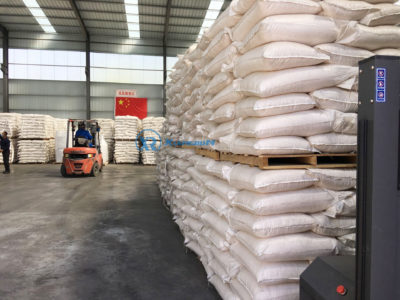Do you know the application of high-purity alumina in refractories?
High-purity alumina is a common inorganic compound, which is a white powder with good thermal insulation performance and chemical stability. Therefore, it is widely used in the manufacture and processing of refractory materials. In this article, we will discuss the application of high purity alumina in refractory materials in detail, and introduce its main characteristics and important manufacturing processes.
Application of high-purity alumina in refractory materials
High-purity alumina is one of the important raw materials for manufacturing refractories. Its unique properties make it ideal for manufacturing high-quality refractory materials. High-purity alumina can be used to manufacture various refractory materials, including ceramic products, ceramic fibers, reinforced glass, etc. High-purity alumina is usually used to produce alumina ceramic materials, which have high strength and wear resistance, and can also be used for inner wall coating of high-temperature furnaces and storage tank coatings, making containers more durable and adaptable.
 Characteristics of High Purity Alumina
Characteristics of High Purity Alumina
High-purity alumina is a high-purity inorganic substance with a chemical formula of Al2O3 and a molecular weight of 101.961. In the air, high-purity alumina has extremely stable chemical properties and can resist the corrosion of most acids and alkalis. Compared with other types of oxides, high-purity alumina has a particularly high melting point, which can reach 2050°C. This high-temperature characteristic makes high-purity alumina ideal for high-temperature applications such as oven linings and tank coatings.
Manufacturing process of high-purity alumina
The manufacture of high-purity alumina relies on raw materials such as bauxite and dolomite. During the manufacturing process, raw materials such as bauxite and dolomite are mixed and dried, then sorted to remove impurities and moisture. The raw material is then heated further, breaking it down and turning it into alumina. The decomposition process requires high-temperature evaporation to sinter the material into alumina particles. During this process, parameters such as temperature, time, and air flow need to be controlled to obtain proper particle size and morphology, as well as tailored material properties.
High-purity alumina plays an important role in the manufacturing process of refractories. It has excellent corrosion resistance and high temperature characteristics, which can enhance the performance and reliability of finished products. For this reason, the manufacturing process of high-purity alumina requires high-quality raw materials, excellent manufacturing processes and sophisticated quality control methods. Through the meticulous manufacturing process, high-purity alumina plays an irreplaceable role in the manufacturing process of refractory materials.

